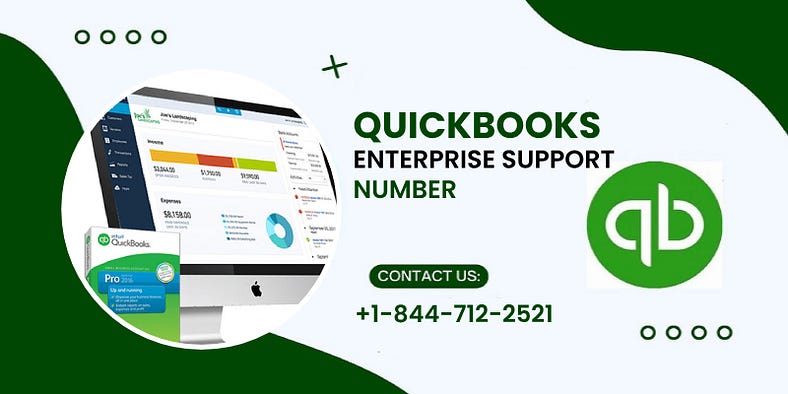
QuickBooks Error 6147 is a common issue that users encounter while attempting to open a company file or backup file in QuickBooks. This error is part of the 6000 series of errors, which generally occur due to issues related to the company file or network setup. Specifically, Error 6147 indicates that QuickBooks is unable to open the company file because the file is either corrupted, damaged, or the file path is incorrect.
To help you fix this problem, we have some resources in this article. But if you need expert help, you can contact us anytime. We have a team of QuickBooks experts who are available 24/7 to assist you. Just call our support line at +1–844–712–2521.
When this error occurs, you might see an error message stating:
“Error -6147, 0: QuickBooks is attempting to open this Company file. The Company file may have been damaged.”
This can be a frustrating experience, especially if you’re trying to access important financial data. Fortunately, there are several methods you can use to resolve QuickBooks Error 6147. In this article, we will explore these methods in detail and provide expert tips to ensure you can get back to work as quickly as possible.
Causes of QuickBooks Error 6147
Understanding the causes of QuickBooks Error 6147 is crucial in resolving the issue effectively. Here are some common reasons why this error might occur:
- Damaged Company File: The most common cause of Error 6147 is a corrupted or damaged company file. This can happen due to sudden power outages, improper shutdowns, or issues during the file’s creation or saving process.
- Incorrect File Path: If the company file is located in a different folder or has been moved, QuickBooks might be unable to locate it, leading to Error 6147.
- Issues with Backup File: If you’re trying to restore a backup file and encounter Error 6147, it could be due to the backup file being damaged or incomplete.
- Network Issues: If the company file is stored on a network drive or server, issues with the network connection can prevent QuickBooks from accessing the file, resulting in Error 6147.
- Long File Path: If the file path exceeds the maximum allowed character limit, QuickBooks may not be able to open the file, triggering this error.
- Insufficient User Permissions: Lack of sufficient permissions to access the file or folder where the company file is stored can also cause this error.
How to Fix QuickBooks Error 6147
Now that we understand the causes of QuickBooks Error 6147, let’s explore the step-by-step solutions to fix this issue.
Solution 1: Verify and Rebuild the Company File
One of the most effective ways to resolve QuickBooks Error 6147 is by verifying and rebuilding the company file. This process helps identify and fix any data integrity issues within the file.
- Open QuickBooks Desktop and navigate to the File menu.
- Select Utilities, then click on Verify Data.
- QuickBooks will begin verifying the company file for any issues. If errors are detected, you will be prompted to rebuild the data.
- To rebuild the data, go back to the File menu, select Utilities, and click on Rebuild Data.
- Follow the on-screen instructions to complete the rebuild process.
After the rebuild is complete, try opening the company file again to see if the error is resolved.
Solution 2: Restore a Backup File
If the company file is severely damaged, restoring a backup file may be the best option. Here’s how to do it:
- Open QuickBooks Desktop and go to the File menu.
- Select Open or Restore Company.
- Choose Restore a Backup Copy and click Next.
- Select Local Backup and click Next.
- Browse to the location where your backup file is stored, select it, and click Open.
- Follow the prompts to restore the backup file.
If the backup file is also damaged, you may need to use the QuickBooks Auto Data Recovery feature or contact QuickBooks support for further assistance.
Solution 3: Rename the .ND and .TLG Files
QuickBooks uses .ND (Network Data) and .TLG (Transaction Log) files to store information about the company file. If these files are corrupted, it can lead to Error 6147. Renaming these files can force QuickBooks to create new, healthy versions.
- Navigate to the folder where your company file is stored.
- Look for files with the same name as your company file but with .ND and .TLG extensions.
- Right-click on each of these files and select Rename.
- Add the word OLD to the end of each file name (e.g., Company File Name .ND.OLD).
- Open QuickBooks and try accessing the company file again.
QuickBooks will automatically create new.ND and .TLG files when you open the company file, which should resolve the issue.

Solution 4: Check the File Path
If the file path is too long or incorrect, QuickBooks may be unable to locate the company file, leading to Error 6147. To fix this, you can shorten the file path or move the company file to a different location.
- Locate the folder where your company file is stored.
- If the file path is excessively long, try moving the company file to a different folder, ideally closer to the root directory (e.g., C:\QuickBooksFiles).
- After moving the file, open QuickBooks and go to the File menu.
- Select Open or Restore Company, then Open a Company File.
- Browse to the new location of the company file and open it.
This should help QuickBooks locate the file and resolve the error.
Solution 5: Ensure Proper User Permissions
Lack of proper user permissions can prevent QuickBooks from accessing the company file. To fix this:
- Right-click on the folder containing your company file and select Properties.
- Go to the Security tab and click on Edit.
- Ensure that your user account has full control over the folder. If not, adjust the permissions accordingly.
- Click Apply and then OK to save the changes.
After adjusting the permissions, try opening the company file again in QuickBooks.
Solution 6: Use QuickBooks File Doctor
QuickBooks File Doctor is a built-in tool designed to fix common issues with company files and network setup. Here’s how to use it:
- Download and install the latest version of QuickBooks Tool Hub from the official Intuit website.
- Open QuickBooks Tool Hub and select Company File Issues.
- Click on Run QuickBooks File Doctor.
- In the File Doctor tool, select your company file from the dropdown menu. If you can’t find it, click Browse to locate the file manually.
- Choose Check your file and click Continue.
- Enter your QuickBooks Admin password and click Next.
File Doctor will scan and repair the company file. Once the process is complete, try opening the file again.
Solution 7: Update QuickBooks to the Latest Version
Running an outdated version of QuickBooks can lead to various errors, including Error 6147. Ensure that your QuickBooks software is up to date:
- Open QuickBooks and go to the Help menu.
- Select Update QuickBooks Desktop.
- Click on the Update Now tab and select Get Updates.
- Once the updates are downloaded, restart QuickBooks and allow the updates to install.
After updating QuickBooks, try opening the company file to see if the error is resolved.
Solution 8: Disable Antivirus/Firewall Temporarily
Sometimes, antivirus or firewall settings can block QuickBooks from accessing the company file, leading to Error 6147. Temporarily disabling these programs may help:
- Temporarily disable your antivirus or firewall software. The steps to do this will vary depending on the software you use.
- After disabling the software, try opening the QuickBooks company file.
- If the error is resolved, you may need to add an exception for QuickBooks in your antivirus or firewall settings to prevent future issues.
Solution 9: Use QuickBooks Auto Data Recovery
If all else fails, you can use QuickBooks Auto Data Recovery (ADR) to recover lost or corrupted data. ADR creates a backup of your company file and a transaction log, which can be used to restore your data.
- Open the folder where your company file is stored.
- Look for a folder named QBBackup.
- Inside this folder, you should find a .ADR file with the same name as your company file.
- Copy this .ADR file and paste it into the folder where your original company file is stored.
- Rename the .ADR file to match the name of your company file, but with the .QBW extension.
Open QuickBooks and try accessing the company file. If successful, you should see your data restored to the last known good state.

Frequently Asked Questions (FAQs)
What is QuickBooks Error 6147?
QuickBooks Error 6147 is an error that occurs when QuickBooks is unable to open a company file or backup file due to corruption, incorrect file path, or other related issues.
How do I know if my company file is corrupted?
If you encounter errors like Error 6147, or if QuickBooks crashes or freezes when trying to open the company file, it may indicate that the file is corrupted.
Can I recover data from a corrupted company file?
Yes, you can try using the Verify and Rebuild Data utility in QuickBooks, restore a backup file, or use QuickBooks Auto Data Recovery to recover data from a corrupted company file.
What should I do if QuickBooks File Doctor doesn’t fix the error?
If QuickBooks File Doctor doesn’t resolve the issue, you may need to manually troubleshoot the problem by renaming .ND and .TLG files, checking the file path, or restoring a backup file.
How can I prevent QuickBooks Error 6147 in the future?
To prevent Error 6147, ensure that your QuickBooks software is always up to date, regularly back up your company file, and avoid sudden power outages or improper shutdowns while using QuickBooks.
Is there a way to avoid long file paths in QuickBooks?
Yes, to avoid long file paths, try to store your company file in a folder that is closer to the root directory (e.g., C:\QuickBooksFiles) and avoid using overly descriptive folder names.
Can network issues cause QuickBooks Error 6147?
Yes, if your company file is stored on a network drive or server, network issues such as connectivity problems or incorrect permissions can lead to Error 6147.
What should I do if I can’t find my backup file?
If you can’t find your backup file, try searching your computer for files with the .QBB extension. If you still can’t locate it, you may need to use data recovery software or contact QuickBooks support.
Can antivirus software interfere with QuickBooks?
Yes, antivirus software can sometimes block QuickBooks from accessing necessary files or network resources, leading to errors like Error 6147. Temporarily disabling the antivirus or adding an exception for QuickBooks can help.
What is QuickBooks Auto Data Recovery?
QuickBooks Auto Data Recovery is a feature that automatically creates backups of your company file and a transaction log, allowing you to recover lost or corrupted data in case of an error or file damage.
Conclusion
QuickBooks Error 6147 can be a significant obstacle, but with the right approach and tools, it can be resolved effectively. Whether you’re dealing with a damaged company file, incorrect file path, or network issues, the solutions outlined in this guide should help you get back on track. If you’re still experiencing difficulties, don’t hesitate to reach out to QuickBooks support for professional assistance.



0 Comments